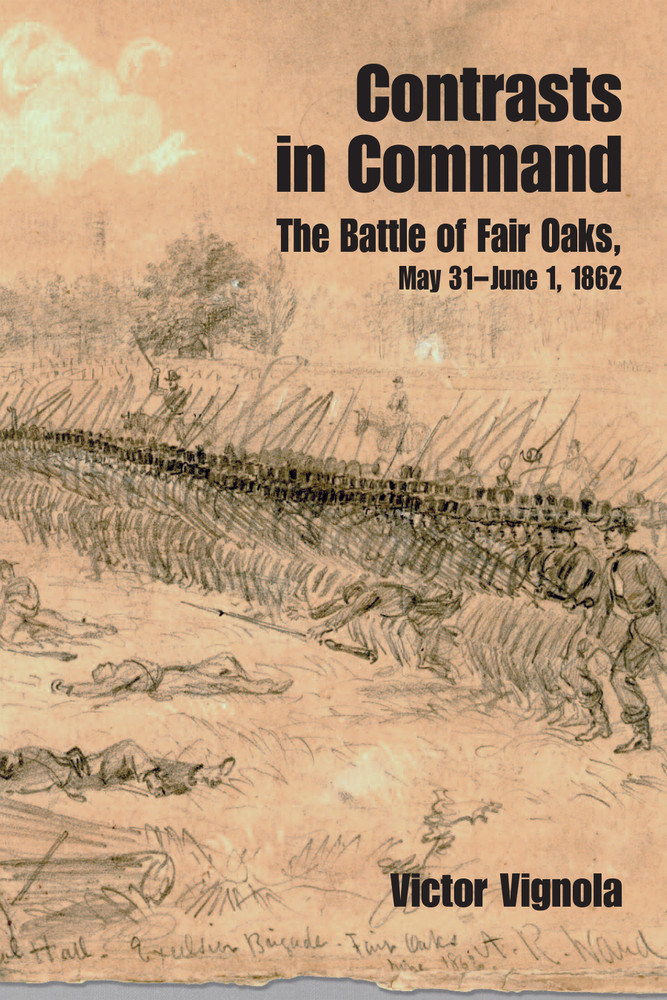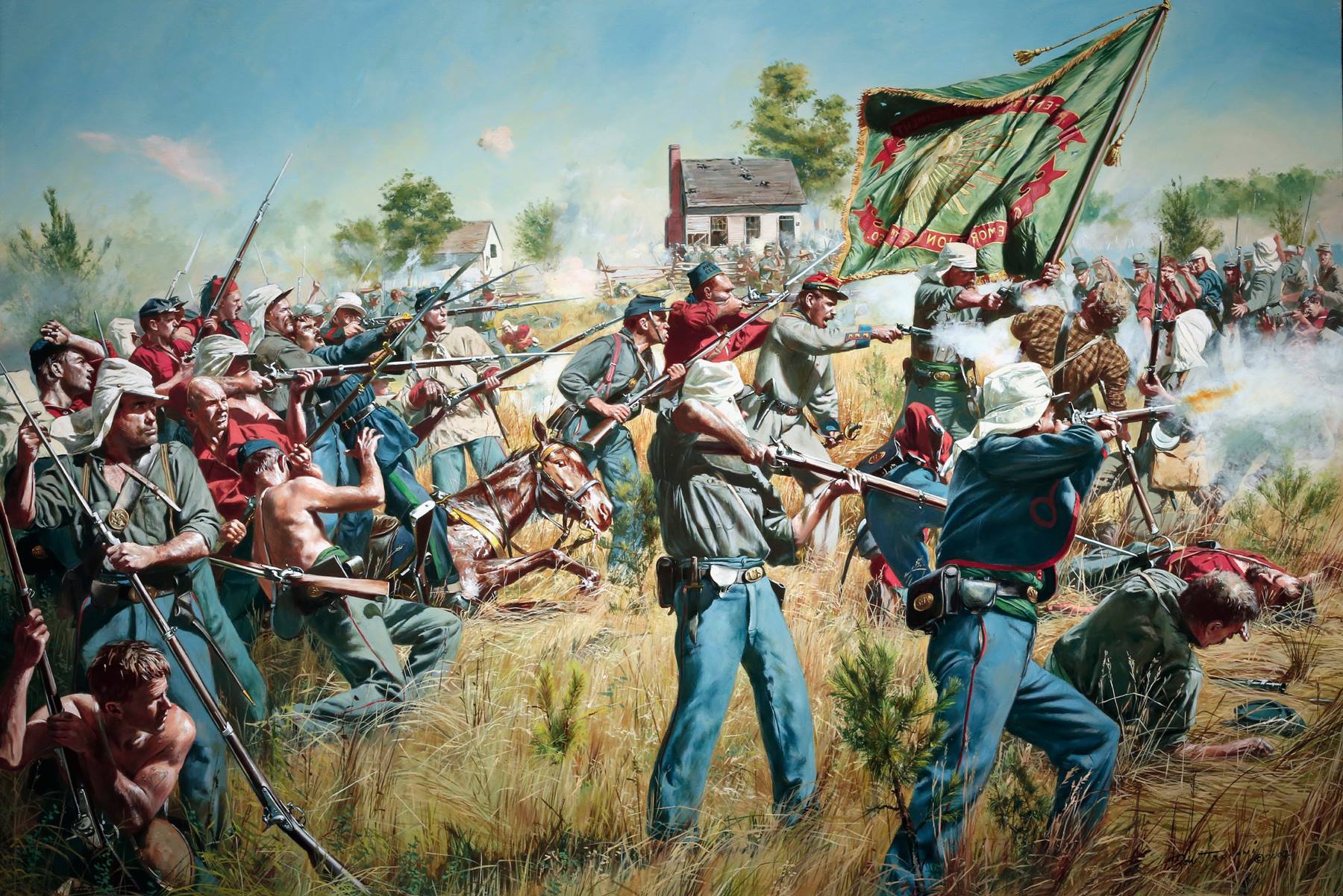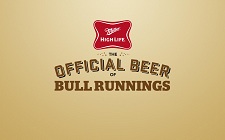BR: Can you tell us a little bit about yourself?
VV: I am a lifelong student of American History. Over time, the study of the Civil War has grown into my passion, which my wife and sons appreciate since it means my time is occupied. I worked for the New York State Office of Mental Health (OMH) for forty-six years. Much of the time spent in labor relations as a representative of OMH senior management often representing OMH in hearings and at inter-agency levels. In addition, I was recognized for a project conducted with the National Institute of Occupational Safety and Health (NIOSH) for my expertise in the development of OMH policy and training initiatives geared toward reducing the occurrence of client on staff workplace violence.
As you can see, my professional career had little to do with my recent endeavors. My introduction to conducting research and writing first occurred in the early 2000’s when I wrote of a Union soldier from Orange County, New York. The story of Hiram Willis appeared in the Orange County Historical Society Magazine in 2010. Contrasts in Command is my first book. In October 2022, North & South magazine published a short article summarizing the Battle of Fair Oaks based upon my work. This January, the America’s Civil War magazine will publish an article titled Very Convenient Truth which describes how James Longstreet and Joseph Johnston conspired to scapegoat Benjamin Huger for their failures during the Battle of Seven Pines.
Since the journey of writing Contrasts in Command began, the most significant achievement has been the American Battlefield Trust’s acquisition of the nearly twelve acres of property at the Adams House location on the Fair Oaks battlefield. The acquisition of this property is significant as it is the only parcel of preserved ground on the entire Seven Pines (Fair Oaks) battlefield. The stars aligned to bring the property owner, my research, and the resources of the Trust together to make the preservation possible.
BR: What got you interested in the Civil War?
VV: There’s no singular event or book that piqued my interest. I developed an early interest in reading stories about the Revolutionary and Civil Wars while growing up on and near farms in New York. Even then, my focus centered around my attempt at trying to understand how the fighting unfolded. This included my study of available maps while envisioning how the battle scenes might have developed. Eventually, I discovered the Time/Life Pictorial books and Bruce Catton’s books, which fed my zeal to understand even more. Of course, after I made my first trip to Gettysburg I was hooked for life. Now I am happiest when I am on a field, any field, with books and maps on hand.
BR: Why did you decide to focus on The Battle of Fair Oaks?
VV: The short answer: the Battle of Fair Oaks made the decision for me.
The writing of this book was quite accidental as I had no intention of writing anything until I began digging into the story of the struggle for the Adams House. Over the years, Charlie Fennel – a good friend and an emeritus Gettysburg LBG – and I have conducted tours at various Civil War locations. Our 2019 tour focused on delivering an in-depth field study of the Seven Days battles. As prep for describing events which led to the Seven Days, what battle would be a better place to start than … Seven Pines?
During one of our scouting trips, I asked Bobby Krick about the Adams House and if the house still existed. Bobby informed me of the location and from his information I wrote a letter to the property owner asking permission to research her property and to bring our small tour group there. After gathering more information regarding the struggle at Fair Oaks and the Adams House, I was hooked.
The story is an amazing one that had previously never been told with any depth. Freeman, Dowdey, Sears, and Newton each wrote accounts which focused more on the Seven Pines sector of the fight and of James Longstreet’s alleged misunderstanding of his orders. All that had been written about Fair Oaks was Sumner’s brave soldiers crossing the flooded Chickahominy River and Johnston’s wounding which then led to Robert E. Lee’s appointment to command of the Army of Northern Virginia.
Johnston’s wounding at Fair Oaks pretty much summed up all I knew of Seven Pines (Fair Oaks) prior to beginning my research. To help connect the research threads I was blessed to have access to the files Bobby Krick maintains at Richmond National Battlefield Park. In addition, Jeff Stocker supplied me with several letters that he transcribed from newspapers. As the threads began connecting it became exciting as I realized the puzzle was coming together, which then fostered more enthusiasm to continue the digging.
The story behind the Battle of Fair Oaks and the struggle for the Adams House made the decision to write the story in book form an easy one.
BR: I think the easiest way to begin discussing your new book is to start with the title: “Contrasts in Command.“ Can you briefly discuss what the contrasts and commanders are at the Battle of Fair Oaks?
VV: Wow! Where to start! There are a few, but the biggest contrast is the aforementioned indecisive conduct of Joseph E. Johnston on May 31, 1862 when compared to the assertive decision making exhibited by Edwin Vose ‘Bull’ Sumner. True, Johnston’s plan was disrupted by the actions of James Longstreet; but Johnston failed to adapt to the situation. At no time on May 31 did Johnston assertively lead by personally taking charge. Simply put, Johnston failed to rise to the situation confronting him. Vigorous and assertive leadership by Johnston could have overcome the issues Longstreet created. Victory was in his grasp if he chose to seek it.
Instead, as EP Alexander, who served on Johnston’s staff during the battle, stated “his [Johnston’s] leadership was an utter failure.” Johnston’s comment to Maj. Samuel French, “I wish the troops had remained in their camps” was telling as it illustrated his docile acceptance of events. Instead of going to see where the problem existed and salvage his attack plan, Johnston remained complacent and had no intention of engaging on May 31 until stirred by a note from Longstreet urging him forward.
In contrast, Sumner was immediately motivated into action upon hearing the opening sounds of battle. Sumner saved an hour of precious time by decisively ordering his divisions to immediately assemble at their bridges. Upon receiving orders to cross the Chickahominy, Sumner crossed with his troops urging them to move quickly. He also ensured that a battery of artillery crossed the flooded river, even as it required the dragging of the guns through the mud so they would be present in battle. In contrast, Johnston brought no guns with him asserting the conditions of the roads were too poor to advance with artillery. The presence of Federal guns and the lack of Confederate guns proved decisive.
Upon his arrival at the Adams House, Sumner immediately took charge by barking out orders and positioning his defenses. He brilliantly recognized the terrain offered the opportunity for him to create an inverted salient which turned his front into a killing field. Sumner actively and visibly led from the front, which is in direct contrast to Johnston’s leadership. May 31, 1862 may have been Sumner’s best day as a commanding officer during the Civil War.
There are other contrasts as well. Longstreet’s lack luster leadership paled in comparison to the dynamic presence of D. H. Hill. A star was born through the leadership provided by Micah Jenkins. I also pitied the position encountered by William ‘Chase’ Whiting as the temporary commander of Gustavus Smith’s division. Can you imagine the difficulty he encountered while advancing into battle with Johnston riding alongside him and with Smith trailing closely behind? How much authority could he have possibly had in making command decisions?
On the Federal side Couch and John Abercrombie recognized an opportunity to escape the crisis facing them and assertively responded. Their decision to occupy the ‘slight eminence’ at the Adams House blocked the Confederate advance along the Nine Mile Road. Soon they were joined by the arrival of Sumner accompanying Willis Gorman’s Brigade. Couch, Abercrombie, and Gorman actively participated in ensuring the successful defense of the Adams House position.
I hope people now understand the significance of Fair Oaks. Johnston’s indecisive dithering when combined with Longstreet’s ineffective leadership tossed away a golden opportunity for a massive Confederate victory. It was the gritty and determined leadership exhibited by Sumner, Couch, Abercrombie, and Gorman that ended Johnston’s hopes for victory.
BR: Can you give us some context on the battle, how it fits in to the Peninsula Campaign, and why it’s important in the overall course of the war?
VV: Although indecisive, the biggest outcome of the battle of Seven Pines (Fair Oaks) lay with the division of McClellan’s army by the Chickahominy River. McClellan spent the balance of June forever promising Lincoln that victory was imminent; while also forever promising that his “arrangements for tomorrow … will leave me to strike the enemy.” Neither promise, just like his promise of “On to Richmond” ever came true.
The battle was the first major battle in the East since the July 1861 battle at Manassas (Bull Run). The growing pains evident through leadership, tactics, and poor staff work was in full view at Seven Pines. Immediately after the battle, Lee recognized the need for a reorganization of his artillery and command structures. The opposing armies each began the construction of formidable earthworks and entrenchments, the construction of which would improve steadily throughout the war.
When McClellan ceased his patient advance toward Richmond after Seven Pines, he effectively transferred the initiative to Lee, who promptly capitalized on the opportunity. Lee’s June 26 attack on Porter’s IV Corps at Beaverdam Creek opened a sequence of fighting known as the Seven Days Battles. Lee’s aggressive campaign exposed McClellan’s flaws as Lee exposed the flaws of others throughout the course of the war.
BR: What were the most surprising things you turned up during the process? Did anything conflict with or confirm your preconceived notions? What were the major stumbling blocks you had to overcome?
VV: Starting with the last part of your question first, the major stumbling blocks were the lack of earlier scholarship, Confederate accounts and accurate maps. Of the possible twenty two Confederate reports of the Fair Oaks fight, only two were submitted (Smith and Dorsey Pender). Whiting refused to write a report, informing Smith that such a report would not reflect well on Johnston, Whiting’s mentor.
With the exception of Smith’s maps, which provided a general macro view of the entire battle, the maps were all over the place. For whatever reason, the only events surrounding Fair Oaks that captured prior attention by writers was Sumner’s timely arrival and Johnston’s wounding.
The most surprising thing I turned up during my research revolved around how Johnston and Longstreet totally conspired to scapegoat Huger. Longstreet, with Johnston’s complicity, was able to establish the alleged ‘misunderstanding’ of his orders narrative while affixing blame for the failure at Seven Pines on Huger. The opportunity for Confederate victory on May 31 was massive. Only through Longstreet’s misconduct and Johnston’s leadership failure was it possible for the plan to fail. Neither man ever paid a price for their Seven Pines failure. For all the grief Longstreet bears for Gettysburg, he deserves much more for his conduct on May 31 & June 1, 1862. I defy anyone to defend it.
I kind of chuckle at the preconceived notions part of the question. I really didn’t have any because I didn’t know enough about the battle to develop notions of any kind. Remember, all I wanted to know was “where’s the Adams House?” The discovery of informational threads only improved my understanding of the fighting.
BR: Can you describe your research and writing process? What online and brick and mortar sources did you rely on most? Over the course of the years, how did technology, the easier availability of source materials like newspapers and digitized archives, change how you went about it?
VV: Not having the availability of reports and accounts meant I had to dig for the story. Again, I credit Bobby Krick for his assistance. Bobby not only helped me navigate my search but he also served as a sounding board. As I have alluded earlier, so much of what I gathered was threads from letters, newspapers and lost accounts. It took a bit of time and analysis to piece the threads together and when I did, Bobby patiently listened to my analysis, challenged it and made my analysis develop to a higher level.
There were two key discoveries that shaped my research. The first was discovering a number of Confederate accounts that mentioned crossing the muddy fields while approaching the Federal lines. But then I noticed accounts from Pettigrew’s Brigade mentioning swamp-like conditions that affected their ability to maintain their battle line. The crowning gem came from Capt. John Beall (Bell) of the 19th Georgia when he mentioned crossing “a lagoon” and how the “lagoon” forced his regiment to the right. It was then that I realized a nameless stream that appeared on all the period maps had flooded which forced a shifting of the Confederate attack to the right. That fact combined with how the 1st Minnesota formed its position by placing three companies to the front while swinging seven companies to its right in order “to provide enfilade fire down the line” that I realized the Federals couldn’t be flanked and the Confederates were in a narrow attack funnel of about 400 yards in width.
Factor in Sumner’s placement of a section of artillery on his right flank with the manner in which the rest of the artillery was deployed; and the protection of four regiments for the artillery, that I then realized Sumner had created an inverted salient. After the threads revealed the nameless stream and the inverted salient all the remaining accounts jelled. It was then just a matter of telling the story. The piecing together of the threads resulted in understanding how the attack developed and how the Confederates lost their opportunity for victory when they could/should have advanced down the Nine Mile Road at least 1-2 hours earlier than they did.
There is no doubt the accessibility of primary source materials on the internet greatly assisted my research. I found a good number of materials through the hathitrust.org and archives.org sites. I found Steven Newton’s PhD dissertation (William & Mary) on Johnston’s Defense of Richmond to be an enormous help in piecing together the challenges Johnston faced. In addition, I was blessed with discovering a good number of accounts written within the month of the fighting. The lack of previous scholarship actually assisted me since it made me focus on the quality of the threads I found.
BR: How has the book been received?
VV: I believe the book is selling well. I hope it is! I was again blessed to have received an outstanding review from Drew Wagonhoffer at the Civil War Books and Authors site. Drew also listed my book as a Top 10 book for 2023 – which pleases me and humbles me all at the same time. Call it beginner’s luck for not knowing what I don’t know but I am happy it all came together so well. Again, as happy as I am with the book, it’s a bigger achievement to have played a part in seeing the Adams property preserved by the Trust. Never again can it be said that there’s nothing to see at Seven Pines (Fair Oaks). I hope someday the Trust places a trail and wayside markers there. For sure, one can tell the story of the fight of Fair Oaks from the Adams House location.
BR: What’s next for you?
VV: I am currently researching the battle of Seven Pines, May 31, 1862. It was never my intention to follow-up with a Seven Pines book but I see there’s a need for a fresh look at the battle. I am hesitant to say this will be titled Contrasts in Command – the Battle of Seven Pines as I am still piecing the threads together. There’s a fair amount of Confederate reports and documents readily available to assist with the telling of that part of telling the story. There’s also the drama of a Federal scapegoat narrative that’s long endured as well – that being soldiers of Silas Casey’s division “fleeing by the 1,000’s!” Well, that’s what the newspapers of the day said anyway but it looks like the narrative is less than truthful. I am just starting to piece the threads I have found and I know I will find more as time goes on.



























Recent Comments